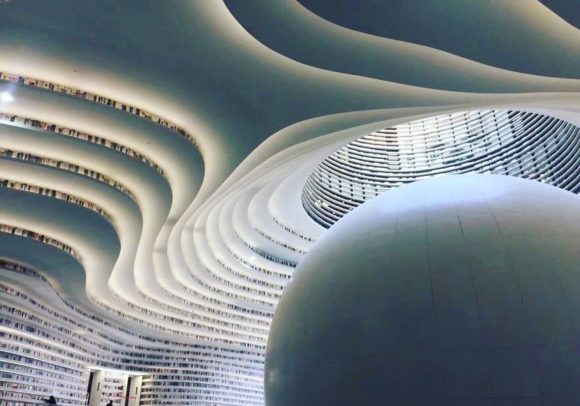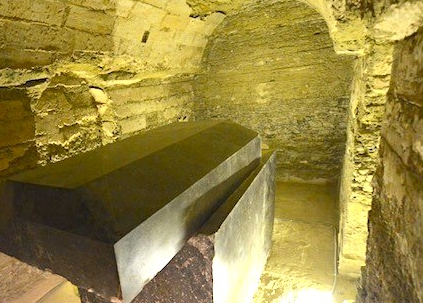China’s new “Eye of Binhai” library can hold 1.2 million books
With murals of tomes as far as the eye can see, this new library is a marvel.
From Bored Panda,
by James Gould-Bourn
“Nobody likes to be watched while they’re trying to read a book, but we’re willing to make an exception if it means getting to visit this stunning new library in China, because as you can see below, the incredible structure has a giant spherical auditorium in the middle that looks just like a giant eye.
Located in the Binhai Cultural District In Tianjin, the five-story library, which was designed by Dutch design firm MVRDV in collaboration with the Tianjin Urban Planning and Design Institute (TUPDI) and has since been dubbed “The Eye of Binhai”, covers 34,000 square metres and can hold up to 1.2 million books. Taking just three years to complete, the library features a reading area on the ground floor, lounge areas in the middle sections and offices, meeting spaces, and computer/audio rooms at the top. We’re not sure how much studying we’d get done though – we’d be far too busy marveling at the awesome architecture!”
More info: MVRDV
For more pictures, click here.
Share



